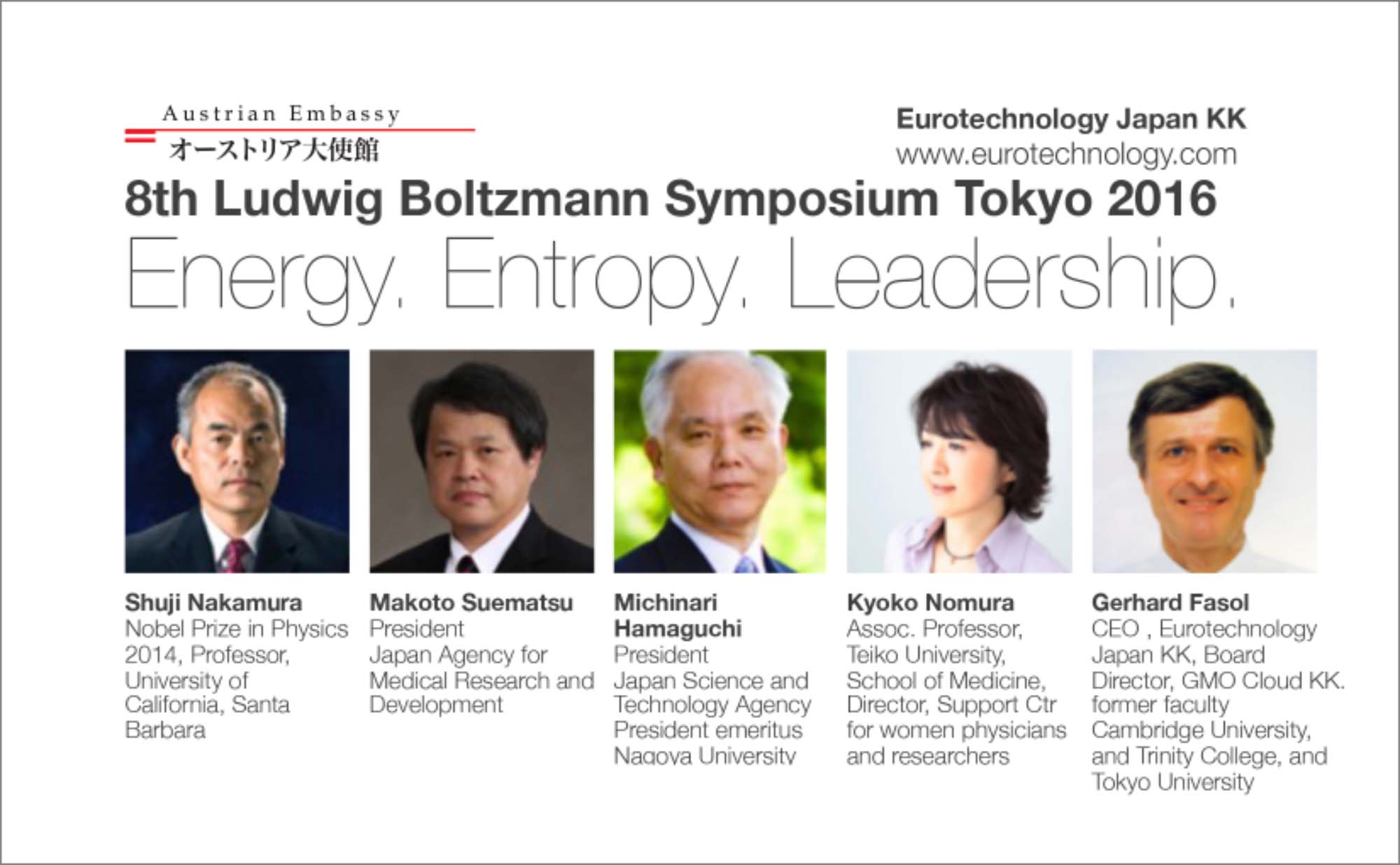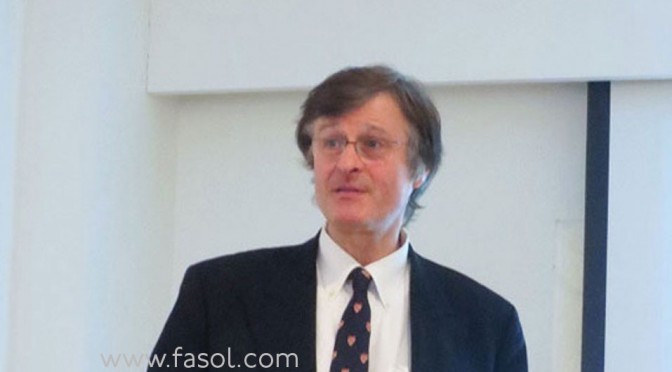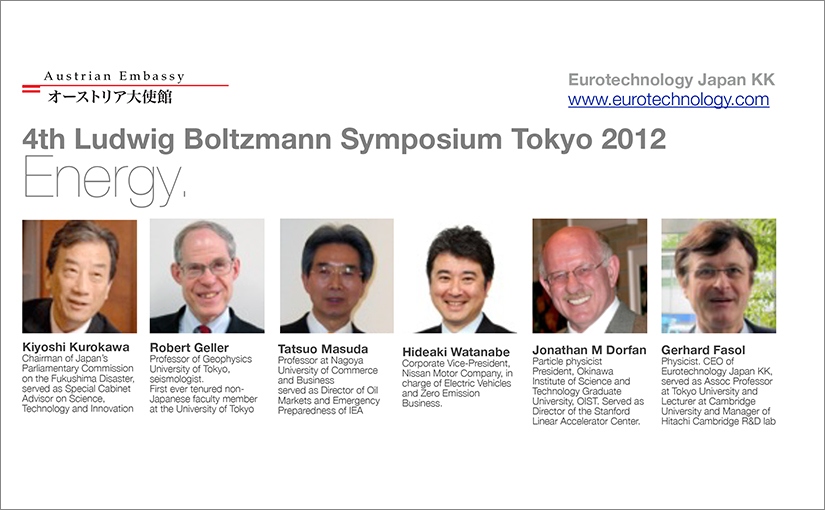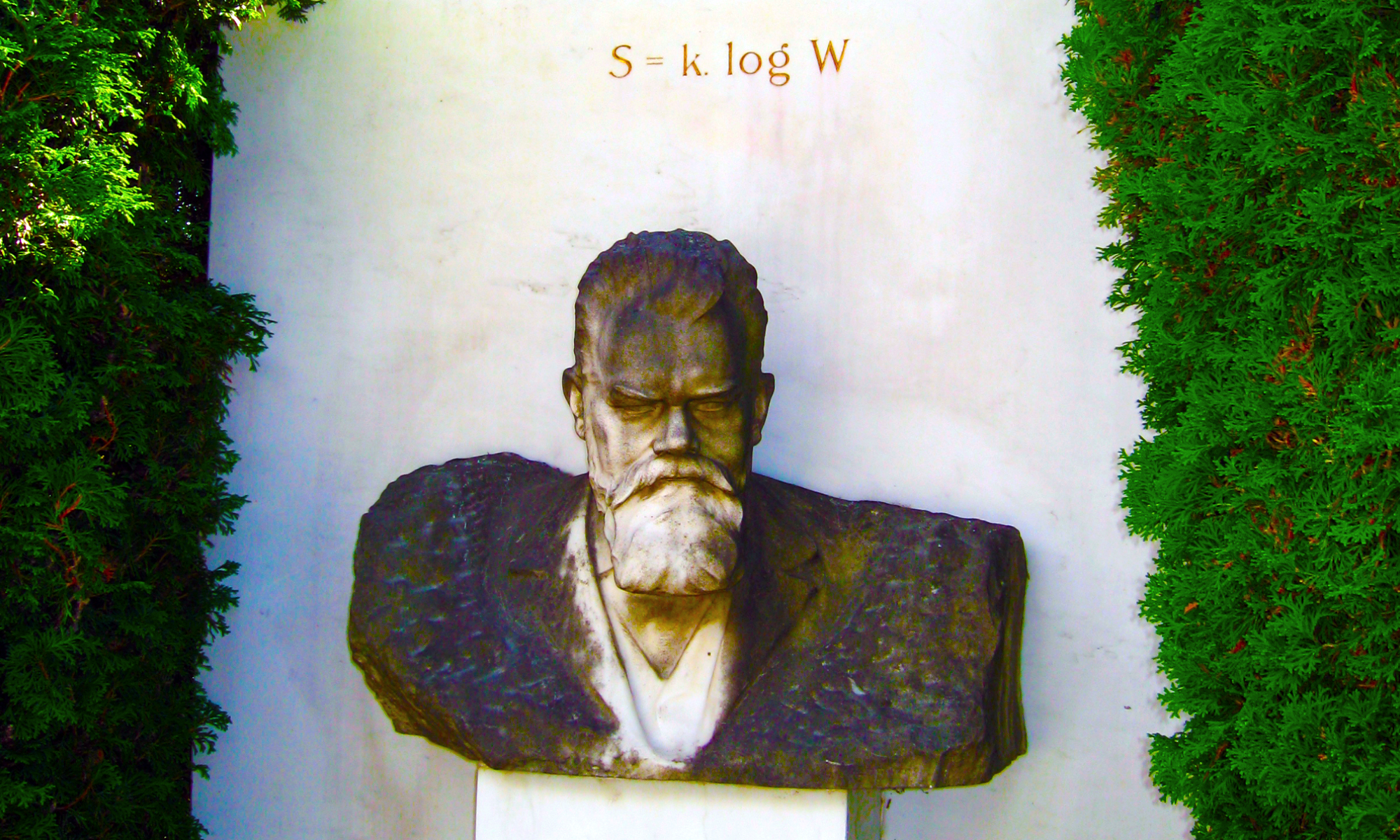Tag: ludwig boltzmann
-

Top-down vs bottom-up innovation: Japan’s R&D leaders at the 8th Ludwig Boltzmann Forum
How to fast-track innovation in Japan Shuji Nakamura’s invention of high efficiency LEDs enable us to reduce global energy consumption by an amount corresponding to 60 nuclear power stations by 2020, for which he was awarded the 2014 Nobel Prize in Physics. Still, a poster child for bottom-up innovation, Shuji Nakamura was sued by his…
-

Ludwig Boltzmann – Energy, Entropy, Leadership by Gerhard Fasol (6th Ludwig Boltzmann Symposium)
Ludwig Boltzmann as leader (Gerhard Fasol, CEO of Eurotechnology Japan KK. Served as Associate Professor of Tokyo University, Lecturer at Cambridge University, and Manger of Hitachi Cambridge R&D Lab.) Keynote presented at the 6th Ludwig Boltzmann Symposium on February 20, 2014 at the Embassy of Austria in Tokyo. Ludwig Boltzmann, the scientist Ludwig Boltzmann’s greatest…
-

Energy – 5th Ludwig Boltzmann Symposium, Tokyo, Feb 20, 2013
Energy 5th Ludwig Boltzmann Symposium – speakers: Robert Geller, Gerhard Fasol, Kiyoshi Kurokawa, Shuji Nakamura Wednesday, 20th February 2013, Embassy of Austria, Tokyo Registration: latest 10 February 2013 (by invitation only) Further information: Peter Storer, Minister for Cultural Affairs, Embassy of Austria Summary by Gerhard Fasol Robert Geller: “A seismologist looks at nuclear power plant…
-

4th Ludwig Boltzmann Symposium Tokyo (Feb 20, 2012, Embassy of Austria)
Energy 4th Ludwig Boltzmann Symposium on Energy in Tokyo. Speakers: Tatsuo Masuda, Kiyoshi Kurokawa, Hideaki Watanabe, Robert Geller, Gerhard Fasol, Jonathan Dorfan Registration: latest 15 February 2011 Further information: Peter Storer, Minister for Cultural Affairs, Embassy of Austria Summary Tatsuo Masuda: “New energy architecture for Japan” Tatsuo Masuda described how Japan’s energy strategy and policy…
-

our future: hot, flat, and crowded… celebrating Ludwig Boltzmann’s 165th birthday
First Ludwig Boltzmann Forum Tokyo on February 20th, 2009 Speakers: Hisashi Kobayashi, Gerhard Fasol, Kazu Ishikawa, Kiyoshi Kurokawa Ludwig Boltzmann was one of the most important physicists and philosophers: it is almost impossible for any engineer, chemist or physicist to do a day’s work without using Boltzmann’s tools and results every day. Ludwig Boltzmann is…
-

Ludwig Boltzmann 100 years
On 5 September 1906 Ludwig Boltzmann died in Duano, Italy Ludwig Boltzmann: 20 February 1844 – 5 September 1906 Ludwig Boltzmann (20 February 1844 – 5 September 1906) is our company’s founder’s great grandfather – and one of our company’s great inspiration. We are working hard to continue his tradition of innovation and excellence and…